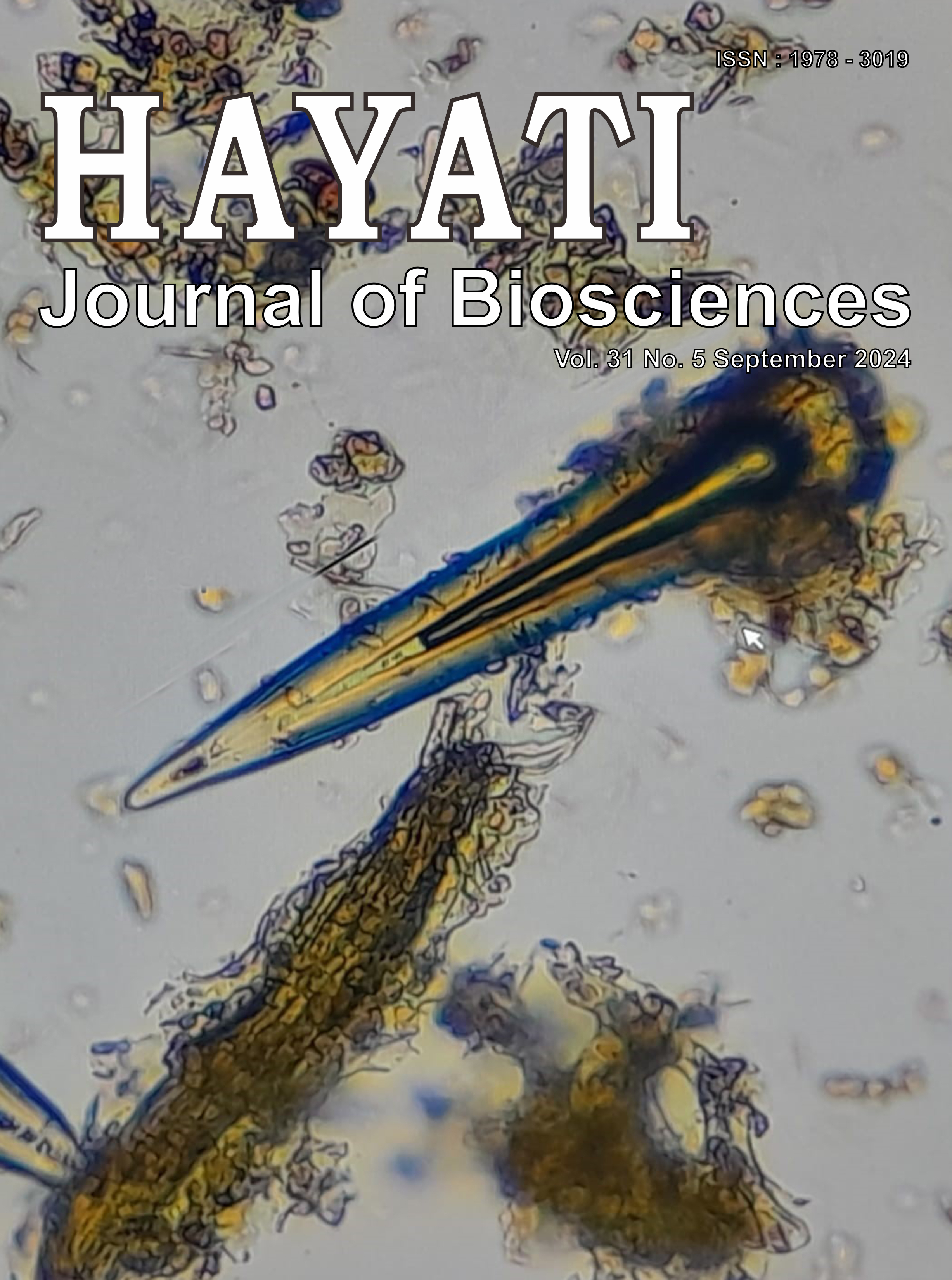Antioxidant, Antidiabetic, and Antibacterial Activities of Terminalia bellerica Seed Extracts in Various Solvent Polarities
Abstract
Terminalia bellerica is well-known for producing edible fruits with pharmacotherapeutic properties. Traditional healers use these species to treat and control diabetes mellitus, its side effects, and other illnesses. Involved in this disease's pathophysiological process, extensive research has been conducted to validate and comprehend these bioactive claims scientifically. This research aims to ascertain the bioactive metabolite contents of different solvent polarities, including ethyl acetate, hexane, distilled water, and methanol. The phenol concentration was determined using the Follin-Ciocalteu procedure to be between 23.45 and 160.41 mg GAE/g. The aluminum chloride colorimetric technique measured flavonoid concentration from 88.52 to 7.12 mg QE/g. The quantitative values of tannic acid, which spanned from 0.78 to 5.32 mg TAE/g, were determined by spectrophotometry UV-VIS. The extracts' capacity to reduce free radical damage ABTS (2, 2' azinobis (3-ethylbenzene-thiazoline-6-sulfonic-acid) and DPPH (2,2-diphenyl-1-picrylhydrazyl) was examined. The extract ethyl acetate exhibited the most significant level of antioxidant activity, with IC50 values for DPPH and ABTS of 28.17 and 22.22 g/ml, respectively. Staphylococcus aureus (23 mm) and were tested for antibacterial and antifungal activity in a methanol extract (21 mm). In vitro, antidiabetic activities were assessed using α-glucoside and α-amylase inhibition. The ethyl acetate extract has α-glucoside inhibition IC50 of 23.04 g/ml and α-amylase inhibition IC50 of 25.35 g/ml. T. bellerica seed includes secondary metabolites that show promise as lead chemicals in creating potent medications.
Downloads
Copyright (c) 2024 Atmira Sariwati, Fita Sari, Venty Suryanti, Desi Suci Handayani, Ichiro Kamei, Ninis Yuliati

This work is licensed under a Creative Commons Attribution-NonCommercial 4.0 International License.
HAYATI J Biosci is an open access journal and the article's license is CC-BY-NC. This license lets others distribute, remix, tweak, and build upon author's work, as long as they credit the original creation. Authors retain copyright and grant the journal/publisher non exclusive publishing rights with the work simultaneously licensed under a https://creativecommons.org/


















.png) IPB University
IPB University Department of Biology
Department of Biology The Indonesian Biological Society
The Indonesian Biological Society 

